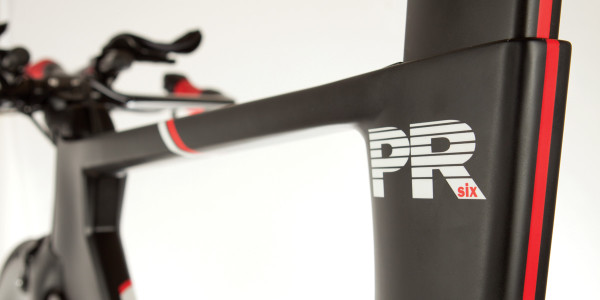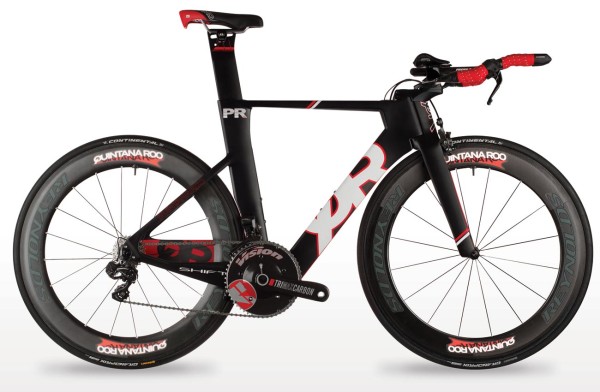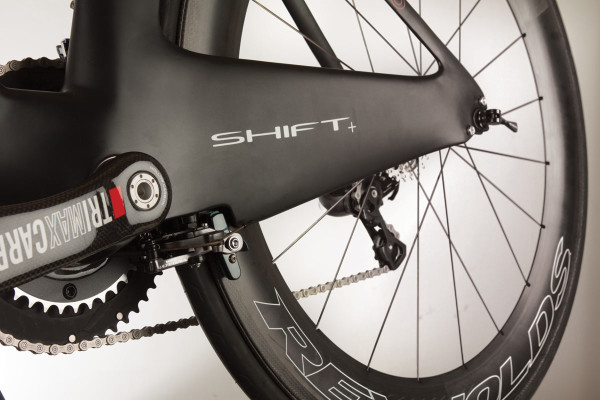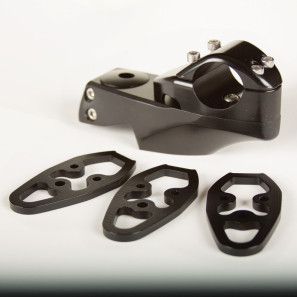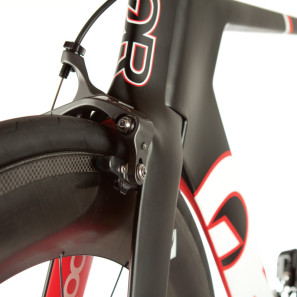Well-known for their purpose-built triathlon bikes, Quintana Roo has introduced a new elite-level Superbike that is more flexible, functional, and useful than their previous offerings. The PRsix was designed from the ground up to be more versatile than its predecessors on a wider range of race courses, from including a more adjustable cockpit to focusing on the ease of setup and breakdown when traveling to races. All this while delivering a bike lighter, more aero, and more affordable than most of the elite-level competition.
Click through for more detail…
“Until this point, triathletes have been presented with a selection of superbikes that are relatively heavy, expensive to maintain, and designed for the wind-tunnel alone rather than the variety of course conditions they are most likely to encounter. Additionally, the conventional wisdom in this category has been that any advance in stability and weight would come at the expense of aerodynamic efficiency. We’re out to prove that wrong, too.” -Peter Hurley, CEO of American Bicycle Group, parent company of Quintana Roo
QR had been wary in the past of trying to speed up handling and lighten their bikes, fearing a loss of aero benefit. With this new carbon frameset they have managed to improve the bike in almost every category, while maintaining their respected aerodynamics with boat tail tubing profiles and aerodynamic characteristics uniquely designed for each frame size.
An overall frame stiffness boost was a big goal for QR, as many narrow profile bikes on the market are designed to roll off a time trial start ramp, ignoring the cold start for triathletes coming out of their first transition or the multiple accelerations of winding or hilly courses. The PRsix also includes faster handling for more real world versatility and the stiffness of new tubing shapes and the new overall frame layout.
At the same time the frame loses weight to come in under 2kg for the frameset, placing it among the lightest of the elite Tri/TT bikes. Some of the unique aerodynamic elements of the frame include QR’s Shift+ concept, wherein the downtube is actually slightly offset to the drive side to divert air from the front wheel to the ‘cleaner air’ non-drive side of the bike, uncluttered by drivetrain. The frame also uses the tallest non-drive side chainstay I’ve ever seen, in what they claim again reduces drag eliminating a leading edge (Leading Edge Absent) to the rear end of the bike, while also boosting rear triangle stiffness.
With less overall surface area for greater stability in cross winds, the PRsix is much more manageable than previous iterations, which translates into more time staying in your aero tuck. The less bulky frame design (something triathletes are a bit unaccustomed to) shows its benefits in QR’s in-house drag tests, showing it performing on par or better than the industry’s best TT bikes in a wide range of yaw angles +/- 20degrees. This again yields a more stable, comfortably handling bike that can actually be pretty light.
Quintana Roo includes a modular, integrated 31.8 stem setup in lieu of a proprietary aero bar. This keeps the front end clean and aero, while making a big shift towards more fit adjustability in bar position and base and aero bar options letting riders install the bar best suited to their riding.
The PRsix is Di2 compatible and incorporates a forward facing direct mount front brake to ensure planting of braking options. It also incorporates a modular either vertical or horizontal dropouts.
The PRsix has an list price of $8,500 for the complete Di2 build with Shimano brakes, a TriMax crank, and Profile aero bars. The $4,500 frameset, including headset, seatpost, stem and brakes, is also available.
